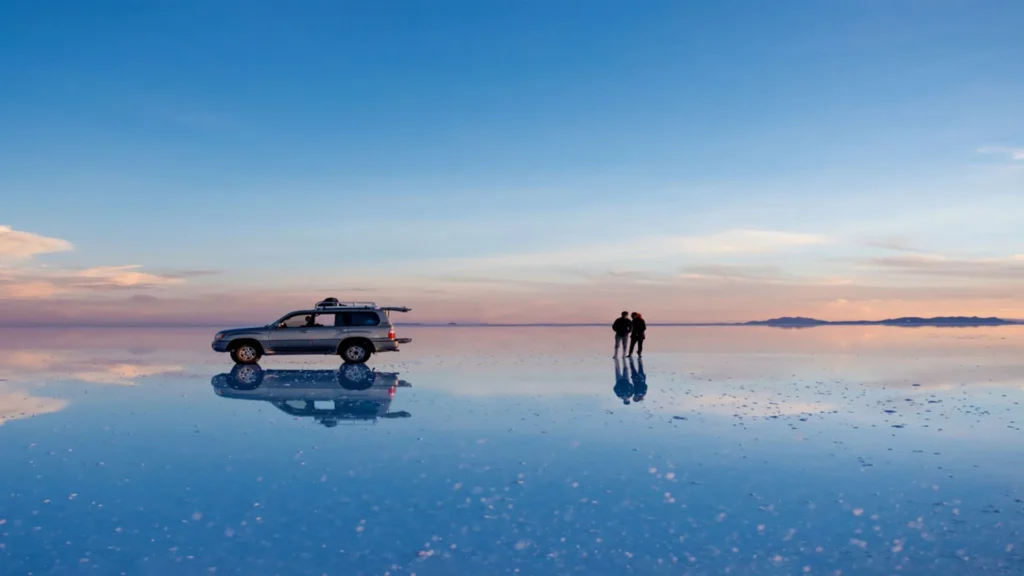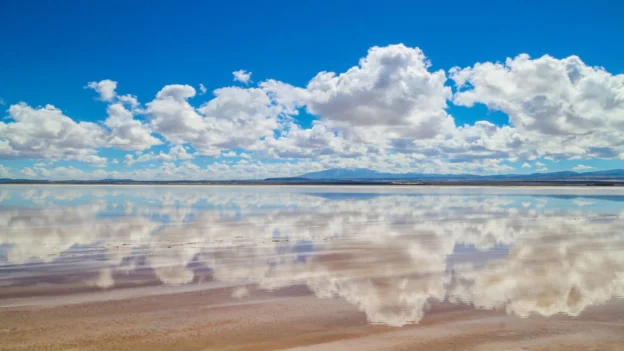The Salar de Uyuni, with an area of 10,582 km², is the largest continuous high salt desert in the world. It is located at 3,650 meters above sea level in southwestern Bolivia, specifically in the province of Daniel Campos in the department of Potosí and in the province of Ladislao Cabrera in the department of Oruro.
In addition to its dazzling expanse of salt, the Salar de Uyuni is known to be one of the most one of the most important the world’s most important lithium reserves.. It also contains significant amounts of potassium, boron and magnesium. The salt layers are superimposed on a bed of brine and lake mud up to 120 meters deep. This brine includes valuable elements such as lithium, boron (borax), potassium, magnesium, carbonates and sodium sulfates.

Salar de Uyuni is an important source of lithium
This site is particularly relevant for its richness in lithium, an essential mineral for the manufacture of batteries used in electronic devices and electric vehicles. electronic devices and electric vehicles.. Despite the difficulties in lithium extraction due to the scarcity of water in the region, this resource is considered strategic due to its importance in future technologies and clean energy.
It is important to mention that the Salar de Uyuni is part of the “lithium triangle”.lithium triangle“together with the Salar de Atacama in Chile and the Salar del Hombre Muerto in Argentina. This region concentrates more than 85% of the planet’s known lithium reserves.
About the lithium exploitation plants in the Uyuni Salt Flat
In December 2023, the company Yacimientos de Litio Bolivianos (YLB) inaugurated the Lithium Carbonate Industrial Plant in Colcha K. K. inaugurated the Lithium Carbonate Industrial Plant at Colcha Kin the municipality of Llipi, Potosí. This plant, which marked the beginning of a series of industrial projects in the Uyuni, Pastos Grandes and Coipasa salt flats, was rebuilt starting in 2021 through a reengineering process. rebuilt starting in 2021 through a reengineering process..
This plant has an annual production capacity of 15,000 tons of lithium carbonate, which will be obtained through evaporation pools. In its first phase, it is expected to produce up to 30% of this capacity, gradually increasing to reach its maximum level in 2025.
It should be noted that YLB’s president, Karla Calderón, has indicated that, in addition to the Colcha K plant, projects are underway projects in the Potosí and Oruro salt flats. These new facilities will use Direct Lithium Extraction (DLE) technology with the objective of achieving a combined production of up to 100,000 tons.
This expansion strategy is supported by agreements with international companies, including the Russian company Uranium One Group and China’s CBC and CITIC Guoan.
Follow us on social networks and don’t miss any of our publications!
YouTube LinkedIn Facebook Instagram X
Photo: shutterstock

